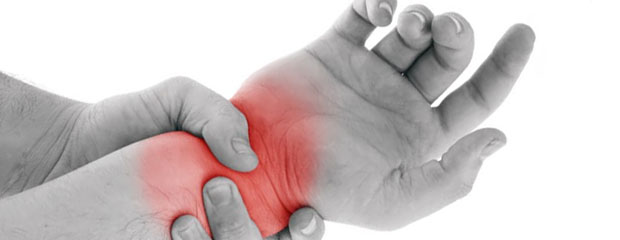I had this conversation with an old friend while I was on the Lenten hiatus. Steven kept ranting about his daily routine, and how he ended up in a hospital bed a few months ago. I started the rantings. I was complaining about my left arm (it gets numb and a little painful sometimes). It turns out he’s been through worse.
Steven is an office staff by day (he’s an IT professional) and a gamer by night (he loves LAN games). He’d spend a day working on the desktop computer, and relax at night with his personal computer playing his favorite online game. That is how Steven’s typical day looks like.
Until one day, a prickling pain shoots in his wrist and up his arm. Steven ignored it, and for months maintained his day-to-day activities, until he realized his pain is just getting worse. He later found out, he’s got what is generally referred to as Repetitive Strain Injury or RSI.
And that’s what brought him to a hospital bed. He’s got carpal tunnel syndrome (CTS is a kind of RSI). The first medication was a mere injection right into his median nerve (CTS occurs when the median nerve swells due to repetitive strain injury). It did no good; he needed a minor surgery.
Most office workers, especially information technology professionals, spend many hours sitting in front of a computer. And if there’s a thing I learned from Steven, it’s that while your desk and your computer seem harmless, they can make you lose your arm (Okay, I might have overreacted there, a bit).
Today let’s talk about office health.
So, what is RSI? Repetitive Strain Injury (RSI) is a collective term that pertains to a number of conditions affecting the musculoskeletal system (collective term for our muscle, nerve, tendon, and bone systems). Repetitive strain injuries are associated with aching muscles, or enflamed tendons or nerves commonly caused by repetitive movement, and/or prolonged poor posture.
Repetitive strain injuries (RSIs) commonly occur in the upper limbs of the body such as the elbows, wrists, arms, and fingers. Such is the typical case due to the fact that RSIs arise from occupational hazards where the upper limbs of the body are frequently exposed or used. And not like ordinary injuries, RSI’s signs and symptoms may exist for a longer period of time.
Types, Causes, and Signs and Symptoms of RSI
Repetitive strain injury (RSI) is multifactorial. For the same reason, RSI has been called many names such as cumulative trauma disorder (CTD), repetitive stress injury, repetitive motion injury, occupational overuse syndrome, or regional musculoskeletal disorder. Nonetheless, there is a common denominator to all RSI conditions – repetition of tasks accompanied with forceful execution.

“There are many causes of RSI, but the consensus is that the common factor is chronic repetition of tasks that do not normally cause damage, possibly accompanied by exertion of force (Bongers et al, 2002). Such repetition can affect the body in various ways.” – The Nursing Times
To date, experts use two major category-types to classify repetitive strain injuries:
- Type 1 RSI: Characterized by swollen or enflamed muscle, nerve, or tendons and usually caused by repetitive and dull tasks. Nonetheless, people who do not perform repetitive tasks might acquire Type 1 RSI.
- Type 2 RSI: Characterized by pain, but without remarkable physical inflammation in the area of pain. Type 2 RSI is also called non-specific pain syndrome, as conditions with signs and symptoms that do not fit the Type 1 RSI typology are assigned a Type 2 RSI typology.
Multifactorial as it is, RSI manifests in various forms of injuries or disorders with varying number of underlying causes and risk factors.
The primary factors affecting RSI are typically related to the environment (i.e. work environment, or leisure’s nature and environment), while secondary factors such as psychosocial risk factors (i.e. mental and physical stress) and biomedical condition such as age, health, and strength may play significant roles, too.
In all cases, chronic repetition of tasks with forceful repetition, chronic vibrations, sustained awkward position, or bad posture due to poor workplace environment (e.g. office space ergonomics) or naturally inclination may affect the limbs in various ways, ergo, might manifest in various RSI conditions.
The following are varied examples of repetitive strain injuries:
- Bursitis – bursae are cushions between bones and tendons, and muscles; bursitis occurs when bursae are inflamed;
- Carpal tunnel syndrome (CTS) – characterized by feelings of numbness and loss of grip due to the compression of the median nerve passing through the carpal tunnel in the wrist;
- Diffuse RSI – characterized only by pain, and without remarkable physical signs of inflammation
- Dupuytren’s contracture – characterized by the bending of one or more fingers into the palm of the hand, due to the contraction of connective tissues under the skin of the palm; these connective tissues toughen over time;
- Epicondylitis – (e.g. tennis elbow, and golfer’s elbow among others) characterized by the melding of bone and tendon due to arduous overuse;
- Ganglion – characterized with spongy sacs or swells of liquid on top of joints, tendons in the wrist, hands, and feet;
- Rotator cuff syndrome – inflammation of tendons and muscles in the shoulder;
- Tendonitis – characterized by the inflammation of a tendon.
- Tenosynovitis – characterized by the inflammation of the inner lining sheath of the tendon;
- Trigger finger – a condition characterized by inflamed tendon and tendon sheaths in the fingers or thumb causing a finger or more to bend
Generally, signs (observed by doctors and medical professionals) and symptoms (felt and reported by the patient) of RSI vary depending on the area affected by the condition and the underlying causes or risk factors involved.
The most common of these symptoms are feelings of numbness, pain, and tenderness in the affected area, loss of sensation, loss of grip, and a throbbing sensation in the affected areas. If left untreated these signs and symptoms persist.
What do numbers say about RSI?
A study in the United States reports an increasing rate of prevalence of acute and sudden computer-related injuries, which are classified also as repetitive strain disorders. The report adds that young children are most affected, as children are now more prone to overindulgence to computer games and contents.
In fact, the U.S. Department of Labor, Occupational Safety and Health Administration (OSHA) reports that ‘ergonomic disorders and repetitive strain injuries are the nation’s most common and costly occupational health problem’, with ergonomic disorders accounting for 56 percent of all reported injuries; while injuries resulting from repetitive or cumulative disorders accounts for over two-thirds of all workplace-related injuries.
In monetary terms, the United States about 20 billion dollars on workers compensation and an additional 100 billion dollars on productivity loss, employee turnover, and other costs, every year. RSI is indeed the United States’ most costly workplace related injury.
The U.S. Department of Labor adds that of the RSI conditions, carpal tunnel syndrome (CTS) is the ‘chief occupational hazard’ affecting millions of American workers at an increasing rate.
Fast Facts About Carpal Tunnel Syndrome (CTS):
- Carpal Tunnel Syndrome (CTS) is the number one reported medical problem affecting over 8 million Americans and accounting for almost fifty percent of all occupational injuries.
- CTS surgery is the second most common type of surgery, next to back surgery, with over 230 000 procedures performed each year.
- To date, of all computer operators in the States, 25 percent has CTS; and by the turn of the century, it is predicted to rise up to 50 percent prevalence.
Preventing RSI Thru Ergonomics and Personal Healthcare
Mitigating the Primary Risk Factor
The primary factors contributing to repetitive strain injuries are environment-related. Statistics show that RSI is prevalent at work, and is on the rise at home. Needless to state, intervention in the workplace environment through ergonomics is necessary to prevent and minimize RSI risks.
Ergonomics is a Greek word with root words: ergon, meaning work, and nomoi, meaning natural laws. It means the science of work and a person’s relationship to that work. It dwells on the concept of work comfort and work efficiency by studying how people work with its environment and devise measures to promote comfort and efficiency. In ergonomics, comfort is tantamount to a worker’s optimal mental and physical well-being (thus a worker’s efficiency).
Ergonomics’ intervention at the workplace begins at carefully designed computer workspaces. With proper positioning of an ergonomically modified chair (or any other ergonomic furniture), elevation of the table, distance of the monitor, and provision of hand tools for cushion and proper placement (i.e. armrests), RSI risk factors are greatly minimized. Acknowledging the variations in people’s height and other physical attributes, designing a workstation to ‘fit all sizes’ is challenging. The best shot at aiming for an ergonomic workspace is by placing ergonomic chairs with armrests and adjustable elevation.
Addressing Secondary Risk Factors
Secondary risk factors involve biomedical conditions such as age, general health, and strength. Psychosocial factors such as mental and physical stress or strains are also counted as secondary risk factors as stress often leads to feelings of physically fatigue.
Sitting at your desk, no matter how comfortable your chair might be, might still cause you some pain in the back, in the neck, in the shoulders, or in the eyes. Your ergonomic chair cannot do the entire job, can it?
Sit properly, do not slouch, and rest your foot on the floor comfortably. Also, avoid sitting for too long. Grant yourself short routine breaks (say every after 20 minutes). Walk away from that desk and stretch your back and shoulder, and flex and flip your wrists without hurting yourself. Also, breaks allow the eyes to recuperate from the glare of the computer’s radiation and avoid uncomfortable pain.
Your computer screen must not be too far up or too low that you slump forward or backward. Your screen must be approximately two to three inches above your face level. Take short breaks and tuck your chin sometimes (point your chin downwards towards your neck for a couple of seconds).
There is an old proverb that says: “Too much or too little of anything is detrimental”. Becoming the outstanding employee of the century, or the best gamer the world would ever see, is not worth killing one’s self.
Keeping our pace at the workplace, or at home while doing the things we love most in our computers is beneficial to our general health. It is never wrong to halt for a bit, and walk away from too much work, and find some relaxed time with yourself.

